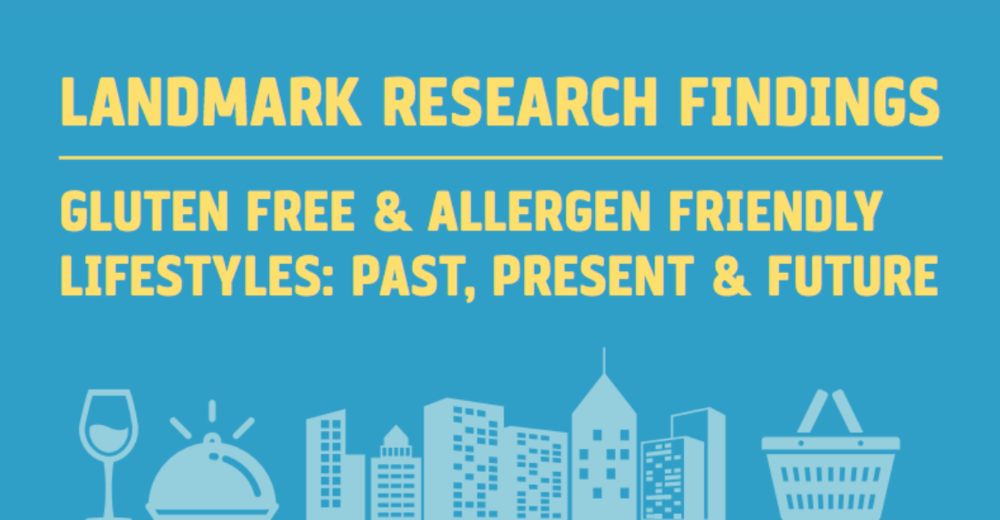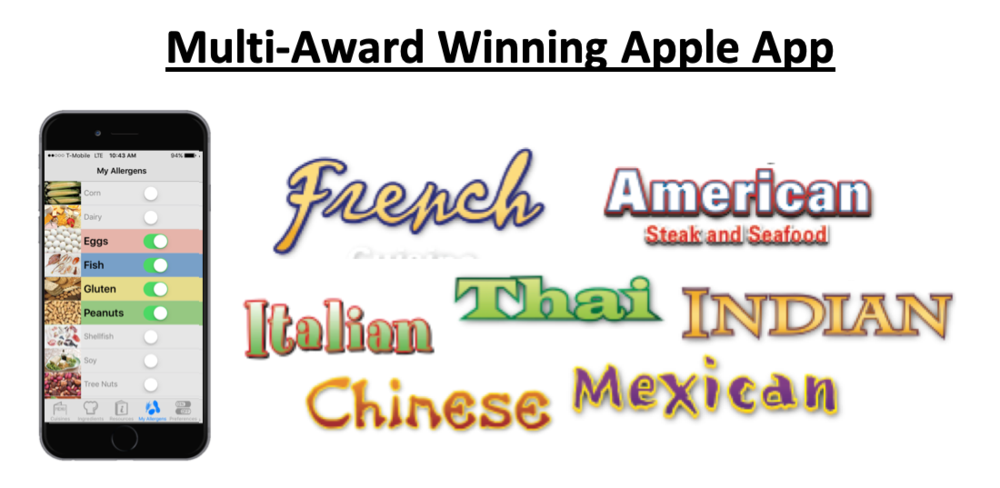
On a global basis, it is estimated that 300-plus million individuals worldwide are now managing special dietary needs. According to global market research sponsored by GlutenFree Passport, over 85% of gluten free and allergy free individuals have two primary concerns when traveling:
-
Safely eating out in restaurants
-
Availability of gluten / allergy free snacks and meals (PDF download)
Approximately 50% of travelers are also concerned about airlines, hotels and communication in foreign languages. The following top 10 tips are designed to help you safely and confidently travel with food allergies, celiac disease and gluten free diets, whether it’s close to home or anywhere around the world, for business or pleasure!
1. Prepare Yourself for the Trip: Inform your hotel and/or cruise line about your gluten free and allergy free needs. Research your travel and restaurant meals options based upon your destination. Prepare yourself with safe snacks and medications as well as back up plans in the event of a mistake, accident or emergency.

2. Order Airline Meals for Your Flight: For long haul flights serving food, order and re-confirm your in-flight meal in advance based upon standard airline codes: GFML for gluten free meals, NLML for non-lactose meals, PFML for peanut free meals and DBML for diabetic meals.
3. Pack Snacks (PDF Download): Pack your own carry-on snacks based on airport security regulations. Bring enough food to get you to your destination and for any excursions throughout your trip. For example, if you’re flying eight hours to Hawaii, take two to three meals worth of food, including protein and carbohydrates, in case of delays. These foods may range from “no preparation” snacks such as protein bars, cookies and fruit, “hot water preparation” snacks such as dried soups or foods that require a small cooler such as yogurt and vegetables. If flying to another country, remember to discard any food that is not pre-packaged prior to entering customs.
4. Pack Medications: In case of anaphylaxis and/or an emergency, carry your medications, including several epinephrine auto-injectors and any other allergy-related medicines. Make sure your medications and snacks are with you at all times for easy access and not stored in the overhead bin in case of turbulence.

5. Communicate with the Flight Attendants:  When flying with anaphylaxis, a potentially life-threatening condition, significant care and caution are critical to minimize risk and ensure a safe journey. Review the in-flight food options, emergency protocols and allergy policy prior to booking your flight. Notify the airline representative during booking and at check-in about the severity of your allergies and ideally, book the first non-stop flight of the day. Inform the flight attendants, request pre-boarding and sterilize all surfaces as required.
When flying with anaphylaxis, a potentially life-threatening condition, significant care and caution are critical to minimize risk and ensure a safe journey. Review the in-flight food options, emergency protocols and allergy policy prior to booking your flight. Notify the airline representative during booking and at check-in about the severity of your allergies and ideally, book the first non-stop flight of the day. Inform the flight attendants, request pre-boarding and sterilize all surfaces as required.
6. Educate Yourself About Food Concerns: Understand your food concerns in terms of food aliases, ingredients and dish preparation at detailed in the Let's Eat Out series and specific ethnic food restaurant guides including:
-
What ingredients contain your allergen(s) and which are safe to eat
-
How food is prepared and what cooking techniques are used (e.g. flour dusting, type of oil utilized, etc.)
-
What modifications can be made to accommodate your requirements
-
Where could allergens be hidden (e.g. soy sauce contains wheat and gluten, artificial mashed potatoes may contain peanuts, etc.)


7. Communicate with Restaurant Staff: Almost 90% of food service and hospitality professionals indicate that communication of special dietary needs when ordering is the top priority for gluten and allergy free guests. Inform the wait staff of your food concern(s) and allergen(s). (e.g. I’m allergic to gluten and wheat so I can’t eat any bread or flour. I’m allergic to dairy so I can’t have any milk and butter, etc.)
8. Ask Questions in Restaurant Terms: Instead of simply asking, for example, “Is this dish gluten and dairy free?” you need to ask questions based on ingredients and culinary techniques in restaurant language terms. For example, if you are gluten free, sample questions could be:
-
Are your hamburgers made with breadcrumbs?
-
Is your chicken flour dusted?
-
Is the sauce made from a roux that includes wheat flour?
-
Are your french-fries fried in the same oil as other breaded items such as chicken fingers?
If you have a milk or dairy allergy, sample questions may include:
-
Does your marinara sauce have Parmesan cheese?
-
Is your steak finished off with butter?
-
Can you sauté the green beans in oil instead of butter?
Note: Ensuring a dedicated fryer is also important for those with dairy, fish and shellfish allergies so no cross contact occurs with other fried foods such as cheese sticks, breaded calamari or battered fish. Although more restaurants around the world are offering gluten free menus and/or allergy charts by dish, it is still critical to understand ingredients, how food is prepared and to ask questions in “restaurant terms” to ensure safe meals everywhere.






















Comments